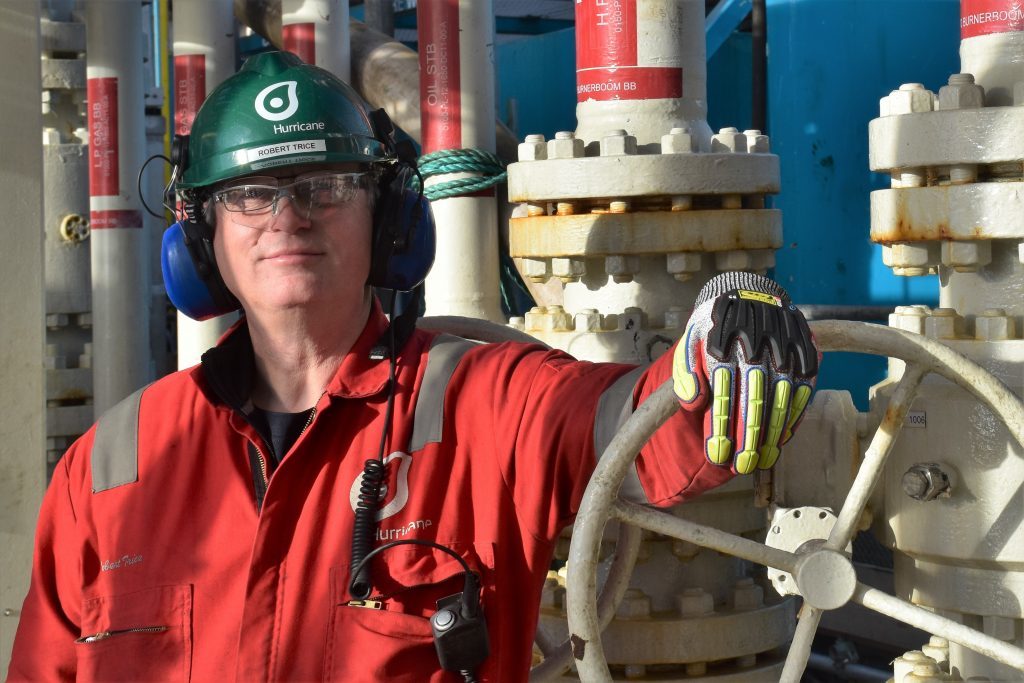
Hurricane Energy narrowed its pre-tax losses in a first half marked by the achievement of first oil from its flagship project west of Shetland.
Chief executive Robert Trice said the Lancaster early production system had performed “at the higher end of expectations” since coming online in early June.
It has given Hurricane its first taste of revenues, with £17.8 million chalked up in the first half of the year. Pre-tax losses shrank to £21.8m from £60m in the same period in 2018.
The London-listed firm has sold more than 1.6 million barrels of oil from four cargoes lifted from the Aoka Mizu floating production and storage vessel.
Hurricane expects to produce 37 million barrels of oil from Lancaster over an initial six years at a rate of 17,000 barrels per day.
Since first oil, the field has been producing at an average of 14,100 barrels per day (bpd).
Output was constrained for a month when a faulty valve in the FPSO turret knocked out one of the two flowlines, though both are now working.
A number of commissioning activities on the vessel are still being carried out.
It means average production will be about 11,000 bpd for the rest of the year, which would give the Lancaster EPS total output of 2.8m barrels for 2019.
Dr Trice said: “The operating cash flow that the EPS is delivering provides Hurricane with greater control of our future as we seek to deliver growth in reserves and production across all of our assets.”
Dr Trice set up Hurricane to deliver hydrocarbons from naturally fractured basement reservoirs, such as those found on the Rona Ridge, where the company’s licences are concentrated.
Scepticism exists within oil industry circles about the firm’s ability to deliver a sizeable portion of the reserves it owns, due to the unpredictable and complex nature of fractured structures.
Dr Trice reiterated that it would take at least six months of steady production to let Hurricane properly evaluate the “validity” of its reservoir model.
He added: “Hurricane’s team expanded significantly in Q4 2018 and Q1 2019.
“The new arrivals have been happily assimilated into the Hurricane culture and we are getting used to operating 24 hours a day for 365 days a year.
“The pace of work has not slowed since the first oil milestone was reached. If anything, it has picked up.”
The firm is also exploring in the Greater Warwick Area, which neighbours Lancaster, as part of a drilling pact with partner Spirit Energy.
The first well in the drilling campaign, Warwick Deep, did not flow at commercial rates.
But success followed with the second well, Lincoln Crestal, which achieved a maximum stable flow rate of almost 10,000 barrels per day.
Lincoln Crestal is expected to be tied back to Aoka Mizu next year, with first oil slated for the fourth quarter of 2020 or early 2021.
Warwick West, the third well in the 2019 GWA programme, is due to be spudded “shortly”.
Hurricane wants to drill more wells in the same area next year and said a rig contract was expected to be signed soon.
The company also provided an update on the Whirlwind discovery, saying the fluid type is “probably” a gas condensate, which means it is not a suitable candidate to be tied back to Aoka Mizu.
Both the subsurface and development teams are working on solutions on how to best appraise the Whirlwind discovery.
Hurricane will relinquish the Strathmore asset, which, unlike the firm’s other reservoirs, is sandstone, not fractured basement.
Hurricane shares were down 2.24% to 46.2p in early trading.
